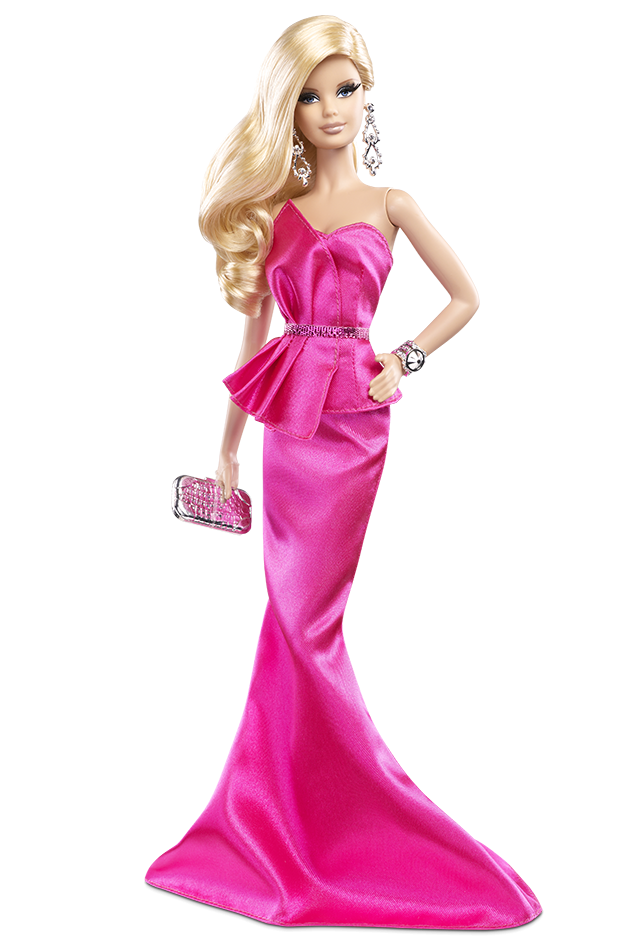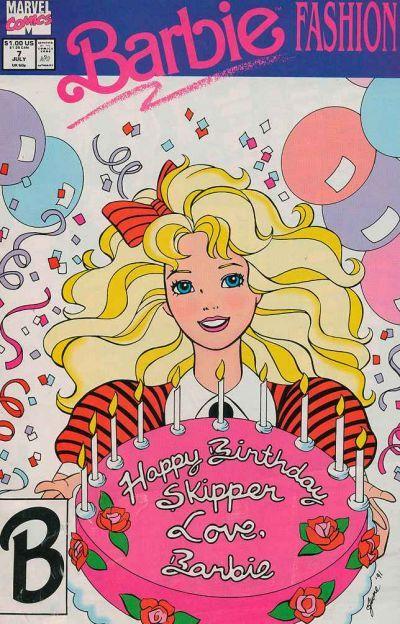 Many comic books old and new have very sexualized images, and especially 50-60 years ago, they were marketed toward children. This made me think about kids and sexuality. Adults act as if children aren’t sexual at all, but they are actually sexual beings. The American creator of the Barbie doll was inspired to create it when she was in Germany and saw a doll in a shop window. German Barbie was based on a cartoon, a hypersexualized figure like Betty Boop. The woman bought several of the dolls and brought them home to the U.S., where her daughter and niece loved to play with them. The woman created a mass-produced line of toys called Barbie dolls. When I was a child, my friends and I played with Barbies from ages 6-11 or 12. We liked creating their lives and scenes to act out stories—it was a terrific way to develop our creativity and imagination. But the sexual aspect of Barbie was still a part of it; I have a memory of my sister saying “My girl has sexy legs too!” (So my friend and I must have said our dolls, “characters,” had sexy legs). We were about 8 or 9. I know lots of adults, especially parents, complain that Barbie’s proportions are not at all realistic (well, she WAS inspired by a cartoon!). There’s an alternative doll that looks more like an actual, real-life teen. But I don’t think little girls necessarily want realistic—also very popular are Monster High dolls, with varying shades of skin (blue, green, and purple) and weird outfits. Many little girls (like childhood me and my friends) want the long-legged doll with big boobs, because that’s still considered sexier and more attractive here (in Western countries). I think this because when I was about 10, a line of Barbie-sized dolls came out that was supposed to look like real high school kids. I remember I got one, and I was disappointed that she had small boobs and big thighs. So positive role models are all well and good, but if kids don’t play with them, how effective are they?
Many comic books old and new have very sexualized images, and especially 50-60 years ago, they were marketed toward children. This made me think about kids and sexuality. Adults act as if children aren’t sexual at all, but they are actually sexual beings. The American creator of the Barbie doll was inspired to create it when she was in Germany and saw a doll in a shop window. German Barbie was based on a cartoon, a hypersexualized figure like Betty Boop. The woman bought several of the dolls and brought them home to the U.S., where her daughter and niece loved to play with them. The woman created a mass-produced line of toys called Barbie dolls. When I was a child, my friends and I played with Barbies from ages 6-11 or 12. We liked creating their lives and scenes to act out stories—it was a terrific way to develop our creativity and imagination. But the sexual aspect of Barbie was still a part of it; I have a memory of my sister saying “My girl has sexy legs too!” (So my friend and I must have said our dolls, “characters,” had sexy legs). We were about 8 or 9. I know lots of adults, especially parents, complain that Barbie’s proportions are not at all realistic (well, she WAS inspired by a cartoon!). There’s an alternative doll that looks more like an actual, real-life teen. But I don’t think little girls necessarily want realistic—also very popular are Monster High dolls, with varying shades of skin (blue, green, and purple) and weird outfits. Many little girls (like childhood me and my friends) want the long-legged doll with big boobs, because that’s still considered sexier and more attractive here (in Western countries). I think this because when I was about 10, a line of Barbie-sized dolls came out that was supposed to look like real high school kids. I remember I got one, and I was disappointed that she had small boobs and big thighs. So positive role models are all well and good, but if kids don’t play with them, how effective are they?
Tag Archives: Barbie
Voices From the Archive: Trina Robbins on Selling Marvel’s Barbie Comics
Trina posted this comment comment during our Wonder Woman roundtable a while back:
The problem definitely seems to be that the mainstream two do not know how to market to girls and women. Back in the 90s when I was one of the writers on Barbie comics for Marvel, their only advertising was in their own comics. Then, on Barbie’s 30th anniversary, my editor got an agreement with Toy R Us to have various Barbie creators do a one-day signing and appearance in their various stores and of course sell the comics. (The comics had NOT been for sale at those toy stores or at ANY toy stores, only for sale in comic book stores!) So I showed up at our local TRoys R Us and they had a nice display with the comics and a cute throne-like chair for me to sit, and people came in and saw the comics and went “Wow, I never knew there were Barbie comics! And look, they’re only 75 cents! Let’s buy some for our daughter/ neice/ granddaughter, etc.” and the comics sold out! Marvel did NOT follow up and start distributing the comics through toystores, and of course eventually they cancelled the line because it wasn’t selling enough. Makes you want to bang your head against a wall!
Noah, while some books in the Minx line were [perfectly fine, others made me wonder if the editor understood whom she was selling to. The books got edgier and adgier until there was one (I think it was called “Shark Girl”) about a surfer girl who lost her heg to a shark — a potentially great premise — but it included erotically charged scenes of girls in the world’s briefest bikinis, the kind of stuff that parents, if and when they saw the books, would have a fit.

